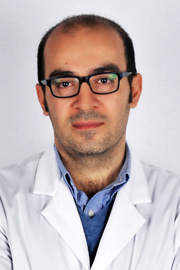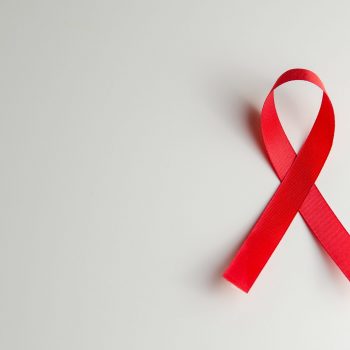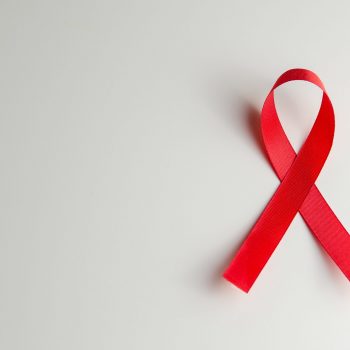A vaccine built as a “mosaic”, built with different fragments of some strains of viruses from different parts of the world to make it suitable for everything. This is the challenge against HIV launched by Harvard Medical School, whose report has been published in Lancet. Now the study to test the new vaccine will continue with a large-scale trial in Africa but the new experimental drug has already elicited a promising immune response in a group of healthy people and on some monkeys with the equivalent animal AIDS virus. We talk about this topic with Prof. Domenico Mavilio, immunologist in charge of the Unit of Clinical and Experimental Immunology in Humanitas and professor at the State University of Milan.
Towards a universal vaccine
Researchers at Harvard Medical School tested the vaccine on about 400 people who, in addition to being free of relevant side effects, have already shown the ability to stimulate an immune response. At the same time, a test on some monkeys exposed to the HIV equivalent showed a lower risk of infection of 64%. The results are so promising that now the vaccine will be tested on 2300 people in different countries of sub-Saharan Africa at high risk of infection in order to verify the effectiveness, reaching a stage of experimentation that so far have reached only five other vaccines.
The opinion of Humanitas
“The search for a vaccine against HIV-1 infection has represented one of the most difficult challenges of modern medicine for more than two decades with results that until now have been extremely disappointing – commented Mavilio – In fact, to date, no vaccine has been able to provide acceptable protection against HIV-1 infection precisely because ‘no experimental strategy implemented by researchers from all over the world induces a satisfactory immune response against the virus. Like this latest experimental study at Harvard, we have seen many times in the past a pre-clinical experiment that gave high hopes of protection both in vitro and in animal models. A protection of 64%, although considered very low for common vaccines against other viral infections that normally ensure effectiveness well above 90%, is considered an almost astonishing result for HIV-1 infection. Precisely because the best protection we’ve ever had in men is just over 30% (RV144 Thai Trial).
“At the present time, therefore,” the professor continued, “there is no preventive vaccine, let alone any therapeutic one, that could prevent or block the infection. This study on primates recently published in Lancet is very promising and has some imported innovations, but we must certainly wait before making considerations about its real effectiveness on humans. The clinical trial currently being prepared will provide us with these answers over the next few years.
HIV: Where is the research?
“The HIV-1 infection is still an incurable disease – said the specialist – There are currently many studies underway for the development of new therapies that, if effective on animal models, will see the light and will be available to all in a medium-long period. These studies have different experimental approaches, from the synthesis of new antiviral molecules to the creation of drugs that stimulate the immune system, from isolating or generating antibodies neutralizing the virus to the creation of vaccination strategies, etc. A job that requires a lot of economic resources and medium-long term investments and that is concentrated only in some countries such as the United States. The basic principle that we should all know and that makes this rebus of the search for a cure so complicated consists in the fact that, once the infection is contracted, we can no longer get rid of the virus that irreversibly infects and damages many organs in our body (immune system, nervous system, kidneys, etc.). Until we have been able to get rid of it and defeat it once and for all, our greatest efforts must be to do everything possible to avoid infection”.
What are the life expectations for those who fall ill with this virus today?
“The current antiretroviral therapy is effective in blocking the replication of the virus and its spread – continued Mavilio, putting it to “sleep” in a so-called phase of latency and stopping the progression of the disease. This requires you to take at least three different medications several times a day and for a lifetime. As soon as you stop taking it for even a single day, the virus wakes up and starts attacking again in an even more aggressive way because it learns to be resistant to therapy. Without considering the enormous impact of toxicity and the side effects of this therapy, which certainly modifies the patient’s quality of life for the worse”. “The only real weapon in our hands today is prevention. One is saved from AIDS… if one does not contract it – Prof. Mavilio specifies – This is the message that must be transferred to the young. Our children need to know that there is no certain cure for AIDS to date. Protected relationships or relationships with secure partners are critical. Indeed, one of the most worrying aspects that encourages new infections is that many people do not know that they are infected and, unbeknownst to them, pass the infection on to different partners. All of this stems from a lack of knowledge of the problem, especially among the younger generations, i.e. among high school students and those who come into contact with the sexual sphere for the first time. In fact, the category with the highest incidence of new infections in the Western world is that of young heterosexuals. Moreover, the negative economic situation with high poverty in our society are unfortunately causing other risks of infection such as the use of infected syringes to re-emerge in western countries. Too often in our clinics we have to meet young people who realize too late what it means to be infected with HIV-1 and what awaits them. Not to mention the discrimination caused by the ignorance that still today often leads modern society to discriminate against those who contract this terrible disease.








